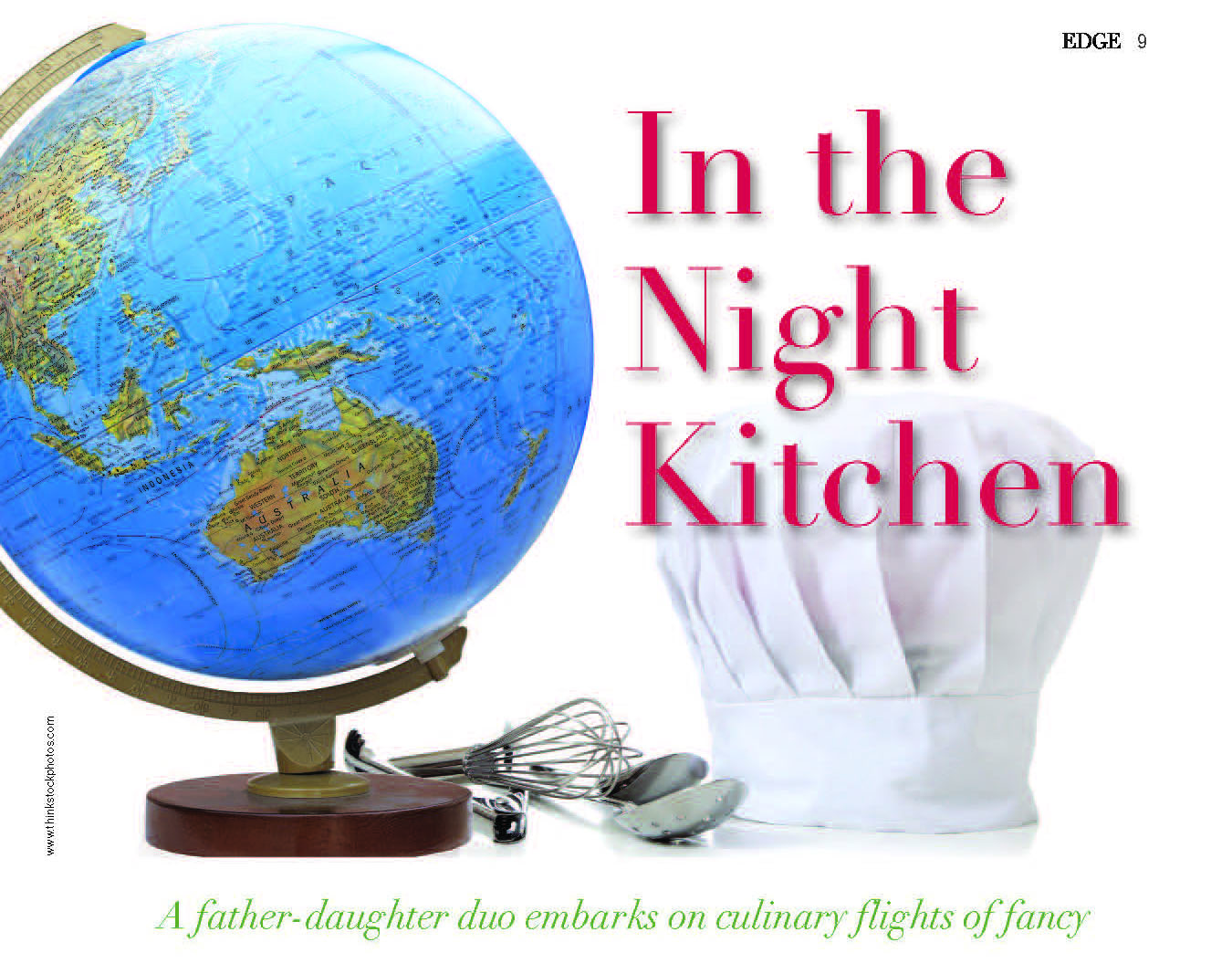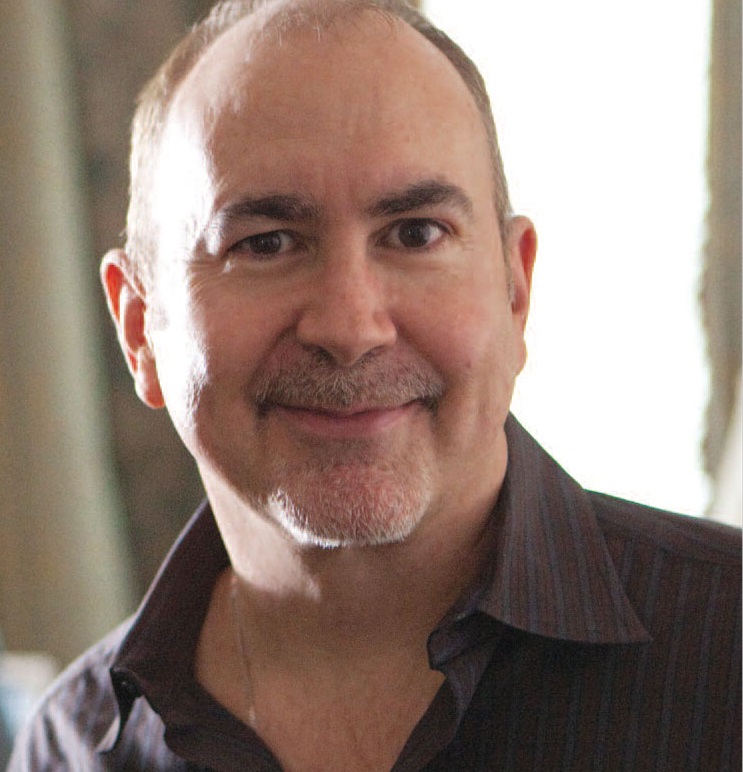Larkspur and Hawk is revisiting designs and techniques of the past…and reinterpreting them for a modern audience.
 For most of us, childhood memories of the Jersey Shore involve a cardboard box of old postcards, the odd seashell, and assorted snapshots of family vacations. For Emily Satloff, those memories are expressed in the artistry and design that has made her jewelry brand, Larkspur and Hawk, one of the hottest on the market. Satloff, a lifelong summer-and-weekend resident of a gracious Victorian home in Monmouth County, creates pieces that evoke memories of a warm, elegant way of life—of multi-generational gatherings of friends and families that moved easily between New York and New Jersey…and of countless hours spent browsing shore antique stores with her mother.
For most of us, childhood memories of the Jersey Shore involve a cardboard box of old postcards, the odd seashell, and assorted snapshots of family vacations. For Emily Satloff, those memories are expressed in the artistry and design that has made her jewelry brand, Larkspur and Hawk, one of the hottest on the market. Satloff, a lifelong summer-and-weekend resident of a gracious Victorian home in Monmouth County, creates pieces that evoke memories of a warm, elegant way of life—of multi-generational gatherings of friends and families that moved easily between New York and New Jersey…and of countless hours spent browsing shore antique stores with her mother.
 I first noticed Larkspur and Hawk during a party at a friend’s home. My eye was drawn to her stunning rose quartz and gold earrings. Having just been to Bergdorf’s, I thought I recognized the expensive designer who made them. Later, when I called my host to thank her—and complimented her on her jewelry—she informed me that I had actually met the designer that night at her house.
I first noticed Larkspur and Hawk during a party at a friend’s home. My eye was drawn to her stunning rose quartz and gold earrings. Having just been to Bergdorf’s, I thought I recognized the expensive designer who made them. Later, when I called my host to thank her—and complimented her on her jewelry—she informed me that I had actually met the designer that night at her house.
I quickly went on-line and discovered that the earrings, while they look important and are real, were much more within my budget. Better yet, I could purchase them during my next trip into the city—at Barney’s and also at Blue Tree, a lifestyle store owned and curated by Phoebe Cates Kline. Similar, more colorful Larkspur and Hawk earrings, were available on the web at Net-a-Porter. I read that Emily Satloff is both a dealer of antique jewelry and a designer of antique-inspired contemporary rings, earrings and necklaces. Intrigued, I contacted her to hear her story.
“My interest in Victorian jewelry and antiques,” explains Satloff, a former Curator of Decorative Arts at the New York Historical Society and Curatorial Consultant to the Metropolitan Museum of Art, “is a by-product of the stately homes that have lined the streets of Deal and Elberon over the last century or so. I love the history of objects. At the Historical Society, it was like working in a grandmother’s attic. I enjoy researching the history of an item, be it esoteric or pedestrian—like George Washington’s toothbrush. Everything is a miniature piece of history and has a story to tell.”
Out of this love and exposure to antiques, she first collected affordable antique jewelry for herself. “I would research each piece—how the lapidarian techniques make a stone more vibrant and how industrial material like cut steel can appear like rose-cut diamonds,” she recalls, “and then educate my clients. About five years ago, I was admiring the effect of foil-backed gemstones and thought: I should take a stab at creating antique-inspired jewelry.”
And so Larkspur and Hawk was born.
“Now I take old ideas and put my own spin on it,” she says. “All the pieces are handmade and I design, pick the stones and hand-paint the foils.”
 In the last year, her business has taken off. But Satloff is determined to “grow smart” as she puts it, and not mass-produce. In the meantime, her jewelry is showing up on fashion plates (Tory Burch), the red carpet (Mariska Hartigay) and the silver screen (Friends with Kids). Something good and beautiful, inspired by New Jersey, is finally getting the right sort of attention.
In the last year, her business has taken off. But Satloff is determined to “grow smart” as she puts it, and not mass-produce. In the meantime, her jewelry is showing up on fashion plates (Tory Burch), the red carpet (Mariska Hartigay) and the silver screen (Friends with Kids). Something good and beautiful, inspired by New Jersey, is finally getting the right sort of attention.
EDGE takes you inside the area’s most creative kitchens.
 The Office Beer Bar & Grill • Grilled Bratwurst
The Office Beer Bar & Grill • Grilled Bratwurst
728 Thompson Ave. • BRIDGEWATER 32–34 Chestnut St. • RIDGEWOOD 1–7 South Ave. • CRANFORD 61 Union Pl. • SUMMIT
619 Bloomfield Ave. • MONTCLAIR 411 North Ave. West • WESTFIELD
We fire finish our beer-braised bratwurst on the grill and serve it with sautéed onions and peppers on a char-grilled garlic-infused baguette.
— Kevin Felice, 40North Executive Chef
 Paragon Tap & Table • Butternut Squash Ravioli
Paragon Tap & Table • Butternut Squash Ravioli
77 Central Ave. • CLARK
(732) 931-1776 • paragonnj.com
Our new restaurant blends hand-crafted ravioli preparations with creative twists on classics. A popular addition to the fall menu at our new restaurant has been the butternut squash ravioli served, which we sautée with butternut squash and sage sauce.
— Eric B LeVine, Chef/Partner
 The Black Horse Tavern & Pub • Bone-in Ham Chop
The Black Horse Tavern & Pub • Bone-in Ham Chop
1 West Main Street • MENDHAM
(963) 543–7300 • blackhorsenj.com
Our ham chop is served bone-in, with a bing cherry compote, and is accompanied by celery root purée and citrus-sautéed spinach.
— Kevin Felice, 40North Executive Chef
 Piattino Neighborhood Bistro • Neapolitan Pizza
Piattino Neighborhood Bistro • Neapolitan Pizza
88 East Main Street • MENDHAM
(973) 543-0025 • piattinonj.com
Our house special Neapolitan-style Piattino pizza is stone-fired and topped with roasted chicken, basil-and-pine-nut pesto, pecorino romano cheese, fresh-pulled mozzarella, braised onions and tomatoes.
— Kevin Felice, 40North Executive Chef
 George and Martha’s American Grille • Maple Pumpkin Pie
George and Martha’s American Grille • Maple Pumpkin Pie
67 Morris Street • MORRISTOWN
(973) 267-4700 • georgeandmarthas.com
This season we are featuring maple pumpkin pie. It’s a maple-infused, spiced pumpkin pie topped with cinnamon and fresh whipped cream.
— Kevin Felice, 40North Executive Chef
 The Office Tavern Grill • Belgium-Style Stout Braised Mussels
The Office Tavern Grill • Belgium-Style Stout Braised Mussels
3 South Street • MORRISTOWN
(973) 285-0220 • officetaverngrill.com
We braise Prince Edward Island mussels in a local craft ale, with garlic and onions. They’re finished with herbs and served with fresh-cut fries.
— Kevin Felice, 40North Executive Chef
 Daimatsu • Tuna Tataki
Daimatsu • Tuna Tataki
860 Mountain Ave. • MOUNTAINSIDE
(908) 233-7888 • daimatsusushibar.com
The must-try favorite on our appetizer menu is tuna tataki—diced tuna marinated in sesame-flavored soy sauce and mixed with finely chopped onion, spicy sprouts and nori on top.
— Momo, Chef
 Publick House • Sesame-Crusted Ahi Tuna
Publick House • Sesame-Crusted Ahi Tuna
899 Mountain Ave. • MOUNTAINSIDE
(908) 233-2355 • publickhousenj.com
This has been one of our signature dishes since we opened in 2009. For the Fall season, the tuna is crusted in black and white sesame seeds and seared rare. It is sliced and served over a medley of stir-fried vegetables, which are cooked in soy sauce. The dish is finished with scallions and accompanied with a side of wasabi.
— Bernie Goncalves, Owner
 Morris Tap & Grill • Roasted Pork Tenderloin
Morris Tap & Grill • Roasted Pork Tenderloin
500 Route 10 West • RANDOLPH
(973) 891-1776 • morristapandgrill.com
We serve our seasonal roasted pork tenderloin with roasted Brussels sprouts and finish it with a port wine demi. We pair all of our dishes with selections from our best-in-the-state craft beer menu for an ever-evolving craft-beer and food experience.
— Eric B LeVine, Chef/Partner
 Thai Amarin • Curry Beef Short Ribs
Thai Amarin • Curry Beef Short Ribs
201 Morris Ave. • SPRINGFIELD
(973) 376-6300, (973) 376-6301 • thaiamarinnj.net
Our juicy beef short ribs, cooked to perfection with rich, mild Massaman curry—emphatically the king of curries—is perhaps the king of all foods. Spicy, coco-nutty, sweet and savory, its combination of flavors has more personality than a Thai election!
— Amy Thana, Owner
 Café Z • Chicken Rapa
Café Z • Chicken Rapa
2333 Morris Avenue • UNION
(908) 686-4321 • CafeZNJ.com
One of our crowd favorites is our Chicken Rapa. We prepare a boneless chicken breast with sundried tomatoes, fresh diced tomatoes, broccoli rabe and serve it over capellini with a white wine, oil and garlic sauce.
— Patricia Inghilleri, Owner
 Chestnut Chateau • Smoked Meats
Chestnut Chateau • Smoked Meats
649 Chestnut Street • UNION
(908) 964-8696 • chestnutchateaunj.com
With football season in full swing, we’ve added smoked certified angus meats to our menu, while cooking up the best brisket, ribs, pork bellies and butts north of the Mason-Dixon Line. Our baby back ribs fall off the bone and with my homemade barbecue sauce a loss by your favorite team won’t matter anymore.
— George Niotis, Chef
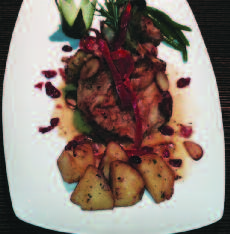 Mario’s Tutto Bene • Vinegar Pork Chops
Mario’s Tutto Bene • Vinegar Pork Chops
495 Chestnut Street • UNION
(908) 687-3250 • mariostuttobene.com
Our vinegar pork chops feature three thin-cut Frenched chops that are coated with Italian breadcrumbs and sautéed with sweet vinegar peppers, prosciutto and garlic. They arrive with house-made roasted or mashed potatoes. Our regulars love this entrée.
— John Garofalo, Owner
 Rio Rodizio • Brazilian Meats
Rio Rodizio • Brazilian Meats
2185 Rte. 22 West • UNION
(908) 206-0060 • riorodiziounion.com
We offer an “All-You-Can-Eat” dining experience transported straight from the streets of Rio de Janeiro to your tableside. Each customer gets to witness a never-ending parade of freshly roasted meat and poultry. Our authentic Gaucho chefs carve these melt-in-your-mouth meats to your liking.
— Paul Seabra, Owner
 The Manor • Herb-Crusted Rack of Lamb
The Manor • Herb-Crusted Rack of Lamb
111 Prospect Avenue • WEST ORANGE
(973) 731-2360 • themanorrestaurant.com
Our herb-crusted rack of lamb is moist, tender and full of flavor—and contrasted with a wonderfully seasoned,crispy exterior texture. The dish is served with a rosemary-mint demi-glace on the side. To complement the lamb, we add a decorative potato basket featuring an array of seasonal vegetables and a rich eggplant caponata.
In search of the ultimate Generation Z vacation
Can spring vacation be just around the corner? For families who embrace the idea of advanced planning, it most certainly is. In decades past, New Jerseyites typically targeted Florida, the Bahamas or the Caribbean. But with the startling growth of eco-tourism industry—and the development of top-of-the-line sustainable and responsible luxury resorts—there is now no reason not to consider a different kind of spring break.
Children today are growing up in a different world than their parents did. From an environmental perspective, it’s a world that past generations have done a remarkable job screwing up. Plant and animal species are being extinguished from the planet at an unprecedented rate and the job of reversing this biodiversity crash will soon fall upon our kids. What better way to foster an appreciation of the natural world than to combine it with an unforgettable family vacation?
Both sustainable tourism and responsible tourism are centered on “sustainable development,” which is shorthand for meeting the needs of the present without compromising the ability of future generations to meet their own needs. The Global Sustainable Tourism Criteria establishes the minimum global standards for what qualifies as sustainable or “green” tourism practices, and there are a total of 23 criteria that lodging and tour operators must meet. They fall into four major categories:
- Demonstrate effective sustainable management.
- Maximize social and economic benefits to the local community and minimize negative impacts.
- Maximize benefits to cultural heritage and minimize negative impact.
- Maximize benefits to the environment and minimize negative impact.
The broader concept of ecotourism ties together the values of sustainable tourism, conservation, and nature-based tourism—and is roughly defined as “travel to natural places.” The International Ecotourism Society defines ecotourim as “responsible travel to natural areas that conserves the environment and improves the well-being of local people.”
In order to experience and support true ecotourism practices, vacationing families must focus on the following objectives:
- Minimize impact.
- Build environmental and cultural awareness and respect.
- Provide positive experiences for both visitors and hosts.
- Provide direct financial benefits for conservation.
- Provide financial benefits and empowerment for local people.
- Raise sensitivity to host countries’ political, environmental, and social climate.
Every year, the range and depth of ecotourism possibilities increases. There are destinations for older vacationers, singles and adrenaline junkies. Great options for families are out there, too. Safety and security are, obviously, of paramount concern and in this regard many families will opt for highly rated properties that offer a blend of traditional amenities along with natural-world experiences. Needless to say, these internationally recognized eco-resorts and lodges tend to be pricey. They are, however, excellent starting points for planning a truly unforgettable spring vacation. Among the best are…
 Lapa Rios • Osa Peninsula • Costa Rica
Lapa Rios • Osa Peninsula • Costa Rica
LapaRios.com • 506–2735–5130
Tiny Costa Rica claims a full five percent of the planet’s biodiversity, and has developed a thriving ecotourism industry. In 2012, the country earned the #1 ranking in the 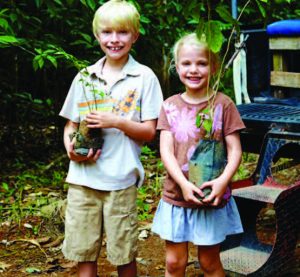 Americas (and #5 in the world) on the Environmental Performance Index and has been cited by the United Nations Development Program for “attaining high human development and equality as well as environmental sustainability.” Located near Corcovado National Park, Lapa Rios is ranked among National Geographic’s Top 50 Ecolodges, Forbes Traveler’s Hotels with the Most Beautiful Views, and is one of the best hotels in the world according to both Travel + Leisure and Condé Nast Traveler. Lapa Rios has also been awarded the Rainforest Alliance’s Sustainable Standard-Setters Award, as well as the 5 Leaf Award Certificate of Sustainable Tourism.
Americas (and #5 in the world) on the Environmental Performance Index and has been cited by the United Nations Development Program for “attaining high human development and equality as well as environmental sustainability.” Located near Corcovado National Park, Lapa Rios is ranked among National Geographic’s Top 50 Ecolodges, Forbes Traveler’s Hotels with the Most Beautiful Views, and is one of the best hotels in the world according to both Travel + Leisure and Condé Nast Traveler. Lapa Rios has also been awarded the Rainforest Alliance’s Sustainable Standard-Setters Award, as well as the 5 Leaf Award Certificate of Sustainable Tourism.
The property’s luxurious eco-resort rainforest bungalows feature views of the Pacific Ocean and wake-up calls from howler monkeys and the inescapable aroma of Costa Rican coffee. Coatamundis, sloths, bats, scarlet macaws, toucans, lizards, geckos, and crabs are regular sights around the resort, as well as the occasional puma, jaguar, ocelot, river otter, crocodile, sea turtle, dolphin, or whale. Family activities include bird watching, cooling off in waterfalls, a local medicine tour, hikes and nature walks along beaches and in the jungle, surfing, kayaking, horseback riding, zip lines, dolphin-spotting tours, and excursions through Corcovado National Park by plane or land vehicle.
 SUMMER FUN
SUMMER FUN
Some of the best eco-resorts are situated outside the tropics and thus are a better choice for a summer adventure. Sadie Cove Wilderness Lodge in Alaska’s Kachemak Bay State Park, has been recognized both locally and internationally for its ecological efforts, ranking among North America’s Top 10 Eco Resorts and earning the title of “United States’ Leading Green Resort.” The lodge runs on non-polluting wind and hydropower and is completely self-sustaining, receiving the Alaska Green Star Award for recycling and sustainable tourism efforts.
Situated on a private beach across the bay from the town of Homer, Sadie Cove provides families with the opportunity to experience some of Alaska’s most stunning natural scenery and wildlife firsthand. The area is considered the bear-viewing capital of the world and is also home to humpback and beluga whales, seals, sea lions, sea otters, marmots, coyotes, wolves, and foxes.
This is a particularly appealing destination for kids interested in outdoor adventures, including wildlife photography, bird watching, mountain biking, hiking, berry picking, sea kayaking, fishing, clamming or simply beach combing. The lodge arranges a wide range of guided tours, chartered sailboat excursions, seaplane trips to a nearby volcanic island, kayak expeditions between glaciers and river rafting.
A special feature of this lodge is the Sailboat Cabin, a separate private guest lodge built into a refurbished classic old sailboat. Your children may take it personally if you don’t book these particular accommodations.(SadieCove.com • (888) 283–7234)
 Campi ya Kanzi • Mtito Andei • Kenya
Campi ya Kanzi • Mtito Andei • Kenya
Maasai.com • 254–45–622516
Ecotourism Kenya recently conferred its “gold” rating on Campi ya Kanzi, which is probably the most honored vacation lodge in East Africa. The property has received the Skaal Ecotourism Award, the Tourism for Tomorrow Award, the Eco-Warrior Award, and the Condé Nast World Savers Award. Campi ya Kanzi is also a Long Run Alliance Member, recognized for “significantly influencing the management of a natural area of conservation value.”
Campi ya Kanzi sits on 280,000 acres of wilderness, which actually boasts a greater diversity of species than the typical national Park, with elephants, buffalos, rhinos, lions, leopards, gazelles, impalas, hippos, baboons, hyenas, foxes, wart hogs, cheetahs, porcupines, and aardvarks playing starring roles. Guests can explore the area in a number of ways, including game drives and walks, forest walks, bird watching, scenic flights, and Maasai village visits. A view of Mt. Kilimanjaro—as well as a gathering of dozens of species of animals and birds at the nearby watering hole—is literally as close as one’s veranda.
 Campi ya Kanzi utilizes ecotourism to support environmental conservation and sustainable community development, partnering with and advocating for the local Maasai community. The lodge uses rain cropping for water, gathers electricity and hot water from solar panels, and cooks all food with eco-friendly charcoal. Guests can choose between a luxury canvas-tented cottage or a private villa in the bush (which is larger and more family-friendly). In addition to the cost of housing each day, visitors pay a $100 conservation fee to the Maasai Wilderness Conservation Trust, which is used to compensate Massai landlords for livestock losses to predators. In essence, every family visiting the property is paying the locals not to shoot lions and other big cats, which is the definition of money well spent.
Campi ya Kanzi utilizes ecotourism to support environmental conservation and sustainable community development, partnering with and advocating for the local Maasai community. The lodge uses rain cropping for water, gathers electricity and hot water from solar panels, and cooks all food with eco-friendly charcoal. Guests can choose between a luxury canvas-tented cottage or a private villa in the bush (which is larger and more family-friendly). In addition to the cost of housing each day, visitors pay a $100 conservation fee to the Maasai Wilderness Conservation Trust, which is used to compensate Massai landlords for livestock losses to predators. In essence, every family visiting the property is paying the locals not to shoot lions and other big cats, which is the definition of money well spent.
ECOTOURISM TIPS
- Think like an Ecotourist- Find reputable, nature-friendly lodging and tour activities that promote conservation. Choose protected or World Heritage sites. Visit government-run game preserves over private ones, which may be for-profit—meaning that the money does not actually go toward conservation.
- Research your destination- Before you push the PAY button, learn as much as you can about the region, country, flora and fauna. This will enable you to make a smart, informed decisions, minimizing stress once you arrive.
- Pack light- Limit the amount of packaging you bring with you. This will only become waste and you can save more room for souvenirs.
- Travel green- Travelling by bus, train, coach, bicycles, or even on foot greatly reduces your carbon emissions and allows you to take in more of the scenery along the way. It’s also fun for the kids.
- Respect the wildlife- Coach your kids in advance not to disturb the plants or animals they may encounter, and to maintain a careful distance.
- Eat smart- Opt for local, in-season produce and avoid foods you suspect have been flown in from great distances. Obviously, avoid any endangered species that may be on the menu.
- Choose souvenirs carefully- Never purchase products made from endangered species and avoid plant species that may become invasive to your homeland and native wildlife.
- Get involved- Often, you can become a member of local sustainable organizations or conservations programs at your destination. This will create a lasting memory for your children, and demonstrate how they can continue to have a positive impact on the region they visited.
 Al-Maha Desert Resort & Spa • Dubai
Al-Maha Desert Resort & Spa • Dubai
Al-Maha.com • 971–4–832–9900
The Al-Maha Desert Resort & Spa achieves a tricky balance of ecofriendly, sustainable practices and luxurious accommodations, helping it to earn the Middle East’s Responsible Tourism Award and a Top 50 Ecolodge ranking from National Geographic. The family won’t be roughing it here. Al-Maha is a 5-star resort that has been singled out in a couple of Internet surveys as the top resort in the Middle East.
Situated in a palm oasis within the Dubai Desert Conservation Reserve, Al-Maha celebrates the cultural heritage and architecture of the Bedouins. The spa uses holistic treatments from Middle Eastern and South Asian traditions, such as rhassoul mud bath chambers. Each meal includes organic international and indigenous delicacies served amongst the dunes (or poolside, if preferred). Al-Maha also offers vacationers two desert activities each day, such as archery, camel and horse rides, falconry and safaris.
The resort recycles 100% of its water, has a seed bank of over 6,000 species of trees, shrubs, and grasses, and is a major contributor to the conservation effort at the reserve—most notably the Arabian Oryx, which was nearly hunted into extinction. The largest free-roaming herd of Arabian Oryx now inhabits Al-Maha. Other native species include gazelles, foxes, hedgehogs, “sand fish,” side-winding vipers, colorful parakeets, eagles, ospreys, owls, and falcons.
 Satwa Elephant Eco Lodge
Satwa Elephant Eco Lodge
Lampung Province/Sumatra • Indonesia SatwaEcoLodge.com • 62–361–7474-205
Located just outside the Way Kambas National Park, a sprawling protected lowland rain forest, Satwa Elephant Eco Lodge helps fund a program to protect the endangered Sumatran elephant and rare Sumatran tiger and rhino. The lodge itself is set inside a walled garden of fruit trees, and includes four cottages, which are ideally suited for a family of four. The cottages are powered by solar energy, as is the lodge. The lodge is dedicated to empowering local communities in long-term conservation and sustainable development.
Satwa is not a conventional resort in terms of opulence and luxury; the show is 500 meters down the road in Way Kambas, where the wildlife includes sun bears, tapirs, gibbons, macaques and more than 300 bird species. Tiger sightings are a rarity, but all of the other park residents—including elephants and rhinos—are commonly encountered on the lodge’s land and river tours. Satwa Elephant Eco Lodge has been recognized by Sustainable Travel International, is Green Globe certified, and is part of network of eco-lodges on the Indonesian islands of Borneo and Bali.

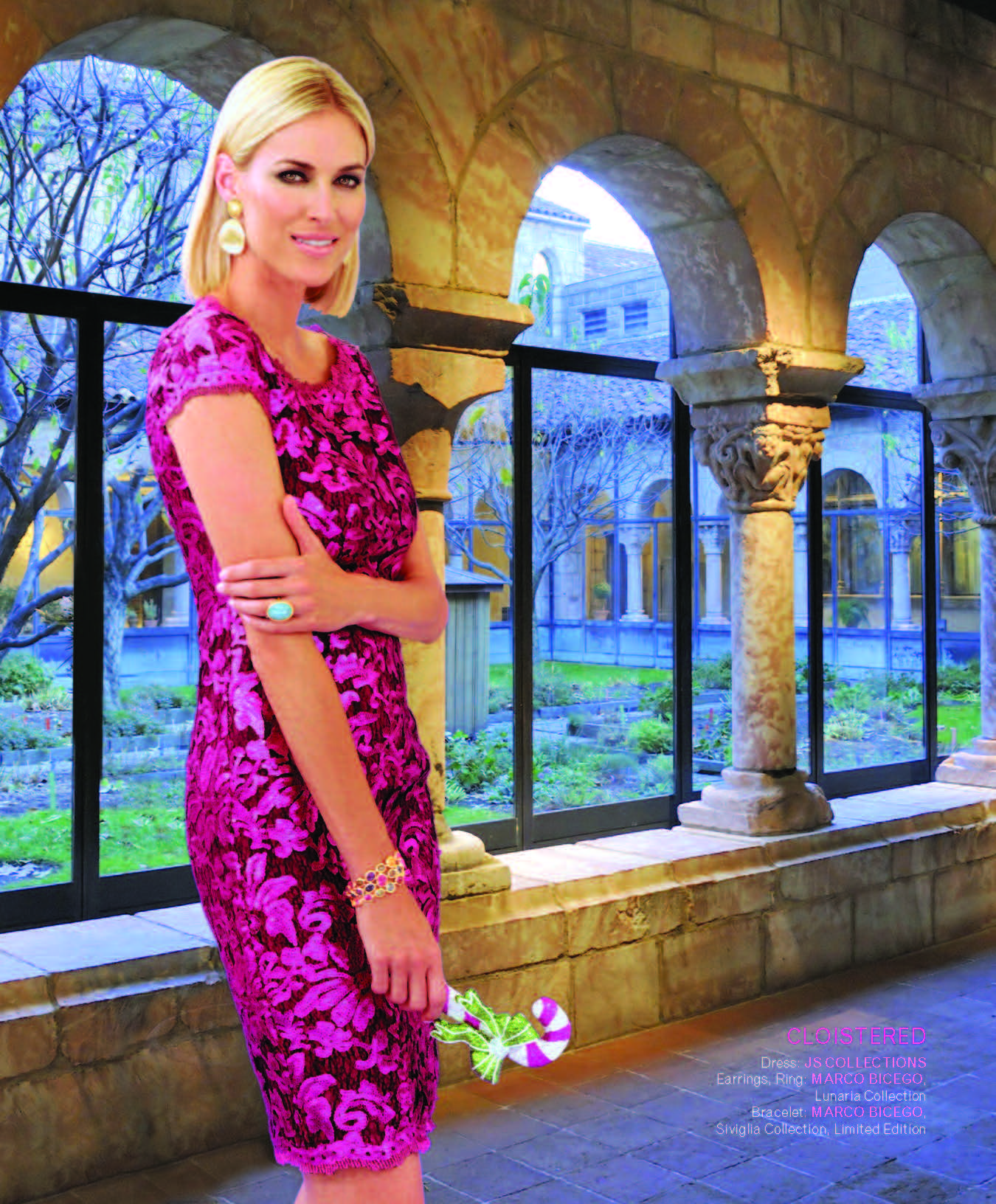



FORE FOR FOURS
(Left photo) Bill Murray, Mike Hannan, Eugene Kennedy, MD, Chair-man of Radiology at Trinitas and Co-Chair of the Trinitas Health Foundation Golf/Spa Classic, and Michael Pantony were among the golfers who helped raise more than $175,000 at this year’s event.
(Right photo) Nick Brown, Tom Pennimpede, Joseph Santo, Principal, Premier Energy Group, LLC, Middlesex and Co-Chairman of the Trinitas Health Foundation Golf/Spa Classic, and Chuck Wilk, paused on the greens at Echo Lake Golf Club in Westfield during the event at which former heavy weight contender Gerry Cooney was a special guest.
WITH TAX TIME AROUND THE CORNER, THERE’S A WAY TO REAP BENEFITS OF GIVING
It’s not too late to cash in on tax savings for 2014! Consider making a tax-effective, high impact gift to Trinitas Health Foundation.
You can qualify for your tax deduction with a gift today or by creating a Charitable Gift Annuity (CGA) that can earn high-interest income for life (and for a second beneficiary, if you c h o o s e ). Through a CGA established with cash, stocks or bonds, you will enjoy an immediate and a long-term tax benefit. If you make a gift of appreciated property, you will only pay capital gains tax on part of the appreciation (which will be spread out over years if you are the annuitant).
Wonde ring what your tax deduction and annual high-interest income might be from a CGA? Call Andi Koenig-Feldman at (908) 994-8249 to find out today.
ring what your tax deduction and annual high-interest income might be from a CGA? Call Andi Koenig-Feldman at (908) 994-8249 to find out today.
A SOLID INVESTMENT
Bank of America continues its support of the Trinitas Health Careers Exploration Program through a $15,000 grant. The bank has made an investment in thousands of young people in Elizabeth and other Union County communities. The ROI?: Thousands of students given the opportunity to explore career opportunities. More than a few successful doctors, nurses and healthcare professionals got their start through this program. Goreti M. Muñoz of Bank of America (center) proudly presented the check representing the Bank’s latest grant to (from left), Lisa Liss, Director of Volunteer Services, Eileen Mulroy, Coordinator of Health Occupations at Trinitas, Nadine Brechner, Chief Development Officer and Vice President, Trinitas Health Foundation, and Jasmine Jones and Kristian Adap, students at Union County Vocational Technical High School who are recent participants in the Health Careers Exploration Program. Photo courtesy of Debbie Jones
 AMAZON SMILE
AMAZON SMILE
If you shop at Amazon.com, you can help Trinitas. Just go to http://smile.amazon.com/ch/22-2353773 and Amazon will donate 0.5% of the price of your eligible purchases to Trinitas Health Foundation. We’re all grins.
IT’S BLACK FRIDAY SOON, SO GIVING TUESDAY CAN’T BE FAR BEHIND…
This holiday shopping season consider opening your wallet to give a special gift to a deserving child.
On Giving Tuesday, December 2, (#GivingTuesday 2014), you can join the Trinitas Health Foundation at the kick off of the Giving season by making a donation by giving the gift of health to less fortunate children.
Your $25 Gift will help provide the quality care that pediatric patients at Trinitas deserve!
Please visit https://www.genestorasp.com/trinitasdonations/secured.aspx. Contact the Trinitas Health Foundatio
News, views and insights on maintaining a healthy edge.
Brown Bagging It
Is your child’s packed lunch getting the job done? A recent report by the Boston Nutrition Obesity Research Center and the National Institutes of Health suggests that it may not. Only 27 percent of lunches brought to school by the 3rd and 4th graders in the study satisfy minimum standards of one ounce of protein, a half-cup of fruit or vegetables, a half-cup of grains and a cup of milk. What’s interesting about these numbers is that the study focused primarily on upper-income families with college-educated parents. In this case, poor food choices are not a function of affluence or education. Among the suggestions nutrition experts offer are packing the lunch the night before, when there is less of a time crunch, and a dedicated section of your fridge for school lunch ingredients.
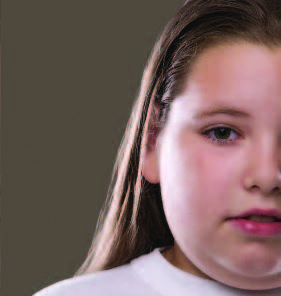 Is Obesity the New Normal?
Is Obesity the New Normal?
With all the talk of stemming America’s childhood obesity epidemic, one crucial component has actually gone underreported: the failure of parents to recognize that their child has a weight problem. A 2014 study published in Pediatrics revealed that the percentage of parents who believe their child is “about the right weight” has risen considerably compared to the previous generation—despite irrefutable evidence to the contrary. Parents of girls in a n earlier study (1988 to 1994) said their kids were about the right weight, as opposed to 78 percent of current parents. The increase was not as dramatic for boys (78 percent to 83 percent). However, 37 percent of parents of obese boys said their weight was about right. These numbers worry researchers because children are less likely to lose weight if their parents don’t see a problem. One contributing factor may be that the percentage of obese adults is double the number of obese children.
 Deep 6 BPA
Deep 6 BPA
Despite the fact the FDA has declared Biphenol A (BPA) to be safe, mounting concern about its long-term effects on the brains and behavior of young children has many parents opting to be safe rather than sorry. “Technology has given us many advances in the food and beverage industry,” says 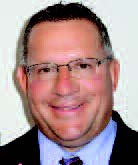 Dr. Kevin Lukenda of Trinitas Regional Medical Center. “Responsible parents need to stay on top of—and be aware of—the possible downside of these conveniences. We need to always remind ourselves that certain products may make our lives easier…but need to know which of these advances can be a risk to our health.”
Dr. Kevin Lukenda of Trinitas Regional Medical Center. “Responsible parents need to stay on top of—and be aware of—the possible downside of these conveniences. We need to always remind ourselves that certain products may make our lives easier…but need to know which of these advances can be a risk to our health.”
BPA is an industrial chemical used to create rigid plastic products—including food and beverage containers, as well as some dental sealants and register receipts. A number of studies are under way, but until their results are in, here are some basic precautions parents can take:
- Never microwave in plastic containers.
- Get rid of any container marked with a #7 or marked PC.
- Store food in glass, ceramic or steel containers instead of plastic.
- Cut down on processed food purchases at the grocery store—most come in plastic packaging.
- Bring your own bags to the store. California recently banned plastic ones. New Jersey should, too.
 E-Lim-I-Nate the Negative
E-Lim-I-Nate the Negative
A recent study conducted at Carnegie Mellon University found that too many negative social interactions can trigger bouts of inflammation that overwhelm a person’s adaptive system and lead to hypertension in older adults. The study (which focused on subjects 50 and older) defined these interactions as involving excessive demands, criticism, disappointment, or other unpleasantness with partners, children, family members, and friends. The effects appear to be more serious among individuals between 51 and 64, and among women in general. One way to manage these situations—besides avoiding them, if possible—is to practice stress-management techniques, including paced breathing and meditation. “The research coming from Carnegie Mellon indicating that unpleasant or demanding interpersonal encounters increase hypertension risk among older adults should come as no surprise to any of us,” points out Rodger Goddard, PhD, Chief Psychologist and Director of Wellness Management Services at Trinitas. Dr. Goddard adds that controlling stress should be very high on one’s priority list. “We cannot become monks and live in a cave in the mountains, so we need to deal productively with what is in our lives,” he says. Stress management involves using both passive and active tools and skills. Passive skills involve improving the capacity to calm our body and muscles down all throughout the day, and involve deep-breathing, stretching, muscle softening and self-calming thoughts all day long. Active skills involves using:
Rodger Goddard, PhD, Chief Psychologist and Director of Wellness Management Services at Trinitas. Dr. Goddard adds that controlling stress should be very high on one’s priority list. “We cannot become monks and live in a cave in the mountains, so we need to deal productively with what is in our lives,” he says. Stress management involves using both passive and active tools and skills. Passive skills involve improving the capacity to calm our body and muscles down all throughout the day, and involve deep-breathing, stretching, muscle softening and self-calming thoughts all day long. Active skills involves using:
- Tough Thinking to fight against and banish our negative worries and emotions
- PIPS (Problem Identification Problem Solving) to dwell on the solutions to our difficulties and not on the problems
- Radical Self-Support to build social skills, avoid the negative interactions cited in the study, nurture ourselves, resolve conflict and get our need for love and support filled
 Your Germs, My Germs
Your Germs, My Germs
The next time you check into a hotel or motel and start thinking about all the icky-sticky bacteria you’re being exposed to, consider this: Within 24 hours of check-in, that room will be microbiologically identical to your home. According to the recently released Home Microbiome Study by the Argonne National Lab in Chicago, the bacteria you carry with you does a remarkable job wiping out whatever the previous occupant left behind. “Those who travel regularly, or even just occasionally, tend to be very suspicious of their environment when they check into a hotel, whether it’s in Des Moines or Dubai,” observes  Michelle Gillis-Harry, RN, MPH, CIC, Director of Infection Prevention and Control at Trinitas. “By using a sanitizing spray or a disinfectant wipe that kills germs, you create a line of defense against germs that others leave behind. But, based on the findings of this study, as you close the hotel door behind you, you’re leaving your own unique microbial imprint. Simply put, we all leave our mark on the places we live, visit, work or play. It’s part of being human and living within the complex environment we call the Earth.” The true potential of the Chicago study (and others in the works) may be in forensics, since microbiological evidence left by humans may be more useful than fingerprints.
Michelle Gillis-Harry, RN, MPH, CIC, Director of Infection Prevention and Control at Trinitas. “By using a sanitizing spray or a disinfectant wipe that kills germs, you create a line of defense against germs that others leave behind. But, based on the findings of this study, as you close the hotel door behind you, you’re leaving your own unique microbial imprint. Simply put, we all leave our mark on the places we live, visit, work or play. It’s part of being human and living within the complex environment we call the Earth.” The true potential of the Chicago study (and others in the works) may be in forensics, since microbiological evidence left by humans may be more useful than fingerprints.
 Trinitas Joins Elite Group of Palliative Care Programs
Trinitas Joins Elite Group of Palliative Care Programs
Earlier this year, Trinitas received the Joint Commission’s Advanced Certification status for its Palliative Care Program, becoming just the fifth medical center in New Jersey to attain this distinction. TRMC’s multidisciplinary team—which includes medical specialists, nurses, pain management specialists, chaplains, social workers respiratory/physical/speech therapists and nutritionists—was singled out for having demonstrated exceptional patient- and family-centered care, optimizing the quality of life for patients with serious illness. Gary S. Horan, President and Chief Executive Officer, praised the work of the team, noting that their commitment to achieving the Advanced Palliative Care Certification was “a tribute to their dedication to these patients and families who need this highly specialized compassionate care. ”According to Valerie Ramsberger, RN, MSN, ACHP—who initiated, developed and directed the Palliative Care Program—in recent years, palliative care has become a specialty that melds the unique skills of a broad spectrum of healthcare professionals dedicated to relieving pain and other symptoms in the most challenging of circumstances. Ramsberger (at center, above), who recently retired as Director of Palliative Care at Trinitas, began the qualifying process more than three years ago by participating in collaborative activities with the Greater New York Hospital Association (GNYHA), Institute for Healthcare Improvement (IHI), and the New Jersey Hospital Association. Geraldine “Magie” Cruz, RN, MSN, CCRN—an ICU staff
FLU SEASON
It’s that time of the year again. Winter is around the corner and flu season—which can stretch from October to May—is already well under way. As Benjamin Franklin once stated, “ An ounce of prevention is worth a pound of cure.” The key to avoiding the flu is prevention. The cornerstones of flu management are based on a three-pronged approach: getting vaccinated, washing hands well and often, and protecting others by staying at home if infected. Once you’ve contracted the influenza virus, the best cure is time. The virus will typically last from 7 to 10 days. It’s important to manage a fever with acetaminophen or ibuprofen and to keep well-hydrated. Antiviral therapy (for example, Tamiflu) started within two days of symptom onset has been reported to decrease the length of the flu by one or two days. However, there is much debate within the medical community as to whether or not antivirals play any role at all. Consult your healthcare provider to determine the appropriate plan of action in your scenario. But first things first…
Who should get vaccinated?
If you are reading this, the answer is almost certainly You. The exceptions would be babies under 6 months, people with allergies and active asthma—need to discuss their options with their physician to determine an appropriate plan of action (i.e., those with an egg allergy)—and those with weakened immune systems, who might be best served to receive the Inactivated Influenza Vaccine (IAV) as opposed to the Live Attenuated Influenza Vaccine (LAIV).
So there are more than one kind of flu shot available?
Yes. You will need to discuss the most appropriate option for yourself with your physician, taking your age and medical history into account. The most common options are:
- Standard Dose Trivalent Shot (Contains Killed Viruses). This shot is approved for people ages 6 months and older.
- High-Dose Trivalent Shot (Contains Killed Viruses). This shot is approved for people ages 65 and older. As we age, our immune system becomes less robust. The aging immune system can lack the necessary immune response to combat the flu. The high dose flu-shot contains three times the exposure (antigen) to the virus resulting in a more immunogenic response to the flu.
- Trivalent Shot (Standard) contains 2 Influenza A strains and 1 Influenza B strain
- Quadrivalent Shot contains 2 Influenza A strains and Influenza B strains
- Nasal Spray Flu Vaccine (Contains Live Viruses). The CDC recommends this as an option for healthy children from ages 2 through 8 years old, as studies have shown that nasal sprays are more efficacious than the flu shot in children in this age group.
Do I need to get vaccinated every year?
Yes, you do. Researchers isolate the top three flu viruses that will be most prevalent each season and create one flu vaccine. Therefore, you need to get a new flu shot every year to make sure that you are protected. Ninety percent of deaths related to the flu occur in people 65 years of age or older, so it is especially important for this group to get annual vaccinations.
How does the flu actually spread?
The flu virus is contained in droplets. The flu is spread when an infected person with the flu sneezes, coughs or talks. As with most viruses, it spreads from our hands to our nasal and oral cavities.
What’s the best way to avoid getting the flu?
If you are sick, stay home from work, school or daycare. It is imperative to practice excellent hand-washing hygiene in order to prevent the spread of the flu. A helpful tip is to wash your hands with soap and water for approximately 15 seconds—the same time it takes to sing the Happy Birthday song. You can also use an alcohol-based hand rub.
What are the common symptoms that tell me I’ve got the flu?
Cough, runny nose, stuffy nose, sore throat, fever, fatigue, muscle aches, vomiting and diarrhea.
How do I know when to seek medical attention?
If you are at the extremes of age, pregnant or have multiple co-morbid conditions such as diabetes, COPD, asthma—or if you are immuno-compromised—get to the doctor the instant you suspect you have the flu.
Editor’s Note: John D’Angelo, DO, is the Chairman of Emergency Medicine at Trinitas Regional Medical Center. He has been instrumental in introducing key emergency medical protocols at Trinitas, including the life-saving Code STemi, which significantly reduces the amount of time it takes for cardiac patients to move from the emergency setting to the cardiac catheterization lab for treatment.
EV-D68
Enterovirus-D68 was first detected in California in 1962. It occurs less frequently than other types of Enteroviruses (EV), which can be difficult to distinguish from any of the viruses that cause the common cold.
The viruses are called “Entero” because they enter the body through the stomach or intestinal tract. There are over 100 types of EV, which affect 10-15 million people each year in the U.S. The strain in question was identified as D68 in August by the CDC. More than 40 states have confirmed respiratory cases caused by EV-D68. In the state of NJ, there are a total of nine laboratory-confirmed cases as of October 3. The counties affected included are: Sussex, Essex. Passaic, Middlesex, Mercer, Morris, Camden and Burlington counties. EV-D68 was detected in specimens from four patients who have died and had samples submitted.
What are symptoms of EV-D68 infection and how is it spread?
Symptoms are nearly indistinguishable from the common cold—cough runny nose, sneezing, body aches and sometimes fever. Severe symptoms include difficulty breathing, wheezing and worsening of asthma. Enteroviruses can be found in secretions from the nose, mouth and through the entire gastrointestinal tract. The virus spreads from person to person via fecal oral contamination, coughing, sneezing or by touching your hands to your face after touching infected surfaces.
Are children at particular risk?
They are. Little ones get their hands in everything. Children are in close contact with one another. Whereas most adults have been exposed to the many types of Enterovirus—and over time, our immunity strengthens and we are able to combat the assailant—infants, children and adolescents lack the immunity necessary to fight the virus. Children with reactive airway disease are particularly susceptible to EV-D68. Parents of children with asthma should use particular vigilance. If their child becomes ill or has increase in his/her work of breathing they should consult their healthcare provider. Adults can contract the virus, of course, but are less likely to become very ill. Even so, EV-D68 can masquerade as the flu or any other “cold-like” illness. Medical professionals view EV-D68 as a possible cause of severe respiratory illness. If you, a member of your family or community experience a new onset of difficulty breathing or shortness of breath, please seek medical attention.
Can it be treated with antibiotics?
No. Antibiotics treat bacteria, not viruses. A patient will be treated by supportive care—namely medications for breathing, fever control and hydration. Practicing proper hand hygiene is paramount to protecting yourself and others. Wash with soap and water for 20 seconds, especially after changing diapers. Hand sanitizers are not effective against Enterovirus. Avoid contacting your eyes, nose, and mouth with unwashed hands. Cough or sneeze into a tissue or an elbow as opposed to an uncovered space. Keep your children or yourself at home if you are not feeling well. Disinfect high-traffic household items such as bathroom surfaces, countertops and toys with bleach-based household cleaners. EV is resistant to alcohol disinfectants. Look for products that list “Alkyl dimethyl benzyl ammonium chloride” as the active ingredient on the label. The product should state that it kills norovirus and rhinovirus.
Should my child stay home from school if I suspect EV?
Parents should never send a sick child to school. And they should not return to school until they are symptom-free and fever-free, meaning a temperature less than 100 degrees for 24 hours without fever-reducing medications.
Breast cancer ‘co-pilots’ help to steer the ship through treatment and recovery.
Too often, cancer treatment is complex and the added stress of making one’s way through myriad mazes of treatment options, insurance forms, doctors’ appointments, and various medical procedures can sap a person’s energy that would be better spent on fighting the disease. Several years ago, Trinitas Comprehensive Cancer Center recognized that many women with breast cancer were in need of a “navigator service” that would help them cut through the red tape surrounding their treatment. Breast cancer patients, Trinitas administrators surmised, would be able to best articulate their concerns and challenges to compassionate healthcare professionals, who could then direct them toward resources designed to help manage the disease. An innovative program was initiated, which showed promising results. Two years ago, the program was revamped to sharpen its focus, resulting in the Breast Cancer Patient Navigator program.
Veronica C. Vasquez, MHA, CN-BA, (left) heads the Breast Cancer Patient Navigator program at Trinitas and works to provide seamless care coordination while considering the unique needs of each patient. “The program helps facilitate patients’ access to doctors’ appointments, deal with insurance claims, and directs them to complimentary transportation and other supportive services,” she says. “Finally, a breast cancer patient navigator offers much-needed emotional support to patients at all phases of breast cancer treatment.”
One of the most frustrating parts of any medical treatment is getting answers to questions in a prompt manner. The Breast Cancer Patient Navigator program helps patients obtain answers to their queries regarding screening, diagnosis, treatment, insurance claims, follow-up visits, clinical trial participation, referrals, transportation, supportive services, and any other concern that may arise. It also assists patients in finding information on self-education resources, and with accessing community resources and cancer management services.
“We also direct patients to support groups that have been shown to help boost emotional well-being while providing coping mechanisms from others who have gone through cancer treatment,” adds Vasquez.

Breast Cancer Navigator, Veronica Vasquez, brings thoughtful caring and support to patients, as shown in the photo on page 44. From her office that overlooks the City of Elizabeth, she manages each patient’s case during their treatment at Trinitas.
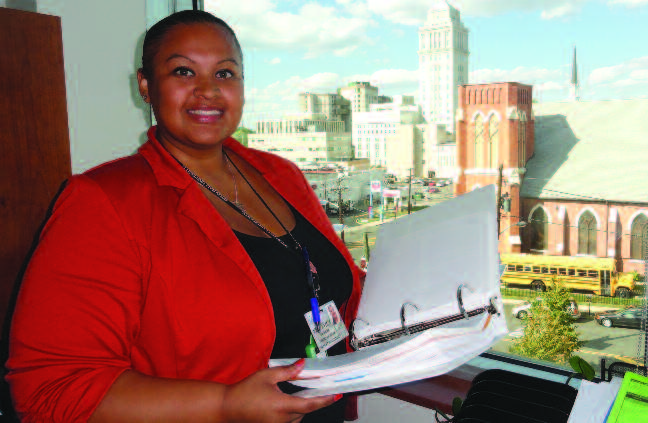
Breast Cancer Navigator, Veronica Vasquez, brings thoughtful caring and support to patients, as shown in the photo on page 44. From her office that overlooks the City of Elizabeth, she manages each patient’s case during their treatment at Trinitas.
Dacia Gaillard, 43, who was diagnosed with breast cancer this past August, calls the Navigator program “a godsend.” Referred to the program by her physician, she gave it high marks and said it has enabled her to cope with a potentially overwhelming and stressful situation. “I am amazed by the amount of compassion I receive,” she says. “I feel reassured that I am not just a name or a number.”
In addition to helping navigate her way through doctors’ visits and insurance queries, Gaillard explains that she can count on Vasquez to “hold her hand” throughout the often long, and arduous, process. Vasquez had her first personal encounter with breast cancer in 2011, when a beloved aunt was diagnosed with Stage III IBC (inflammatory breast cancer). “Not only was it a life altering moment for her but for the entire family, as she was the first member of the family to receive a cancer diagnosis,” she recalls. “She passed away in 2012, but her legacy lives within all those she encountered, forever.”
At the time, Vasquez—who earned her master’s degree in health care administration from Seton Hall—never dreamed that she would have the position that she holds today. “Having had a close family member diagnosed with breast cancer, I hold the work I do to help these women in high regard,” she says. “I dedicate the work I do in loving memory of my aunt, who I miss greatly.”
There’s no time to spare when responding to a stroke.
You’re having a normal day, going about everything as usual, not giving much thought to what might possibly create issues. You are convinced you have everything under control. You certainly don’t give any thought to the fact that you might become a statistic: Every 40 seconds, someone in the United States experiences a stroke; every 4 minutes, someone dies from one.
Let’s get back to your day. First, you start to feel your face drooping. Next, there is a weakness in your arm. You speak but your words don’t make sense. Don’t wait a moment longer. Time is critical. Call 911 for help.
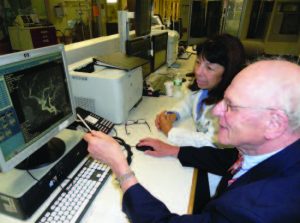
Bernard Schanzer, MD, Chairman of the Division of Neurology, and Debbie Milkosky, RN, Coordinator of the Trinitas Primary Stroke Center, review a CT scan that reveals the presence of a stroke. With decades of experience, Dr. Schanzer serves as the primary neurological consultant for stroke cases at Trinitas, while Debbie seamlessly brings together a team of medical and nursing professionals to address the treatment and care of stroke patients throughout the medical center.
The American Stroke Association has summed up these symptoms in the acronym FAST to encourage a greater awareness of stroke (also know as brain attack). Those who suffer stroke notice a drooping in their Face (F), followed by Arm (A) weakness, and then Speech (S) abnormalities. These symptoms—and others, such as loss of balance or severe headache—mean it’s Time (T) to to call 911.
The person who is symptomatic (experiencing some or all of these symptoms) may be taken so off guard that an observer is often better able to act quickly and place that call. Whatever the case, stroke leaves little time for hesitation. In fact, the longer the delay, the greater the chance for brain damage; approximately 2,000,000 brain cells (neurons) die every minute a stroke goes without treatment.
This past October 29th was World Stroke Day. Now in its ninth year of international observance, it calls attention to what can be a life-altering or fatal health emergency. Statistics bear this out. The Centers for Disease Control and Prevention (CDC) report that one of every 19 deaths is caused by stroke—taking the lives of nearly 130,000 Americans each year. The disability that results from stroke costs the nation $38.6 billion annually; that’s a hefty price tag that includes health care services, medication and lost productivity. Although the American Stroke Association emphasizes that 80 percent of all strokes are preventable, uncontrollable risks such as heredity, age, gender and ethnicity remain key factors that can lead to stroke.
 Root Causes
Root Causes
Strokes occur when a blood clot blocks the blood supply to the brain or when a blood vessel within the brain bursts. Medical conditions such as high blood pressure, high cholesterol, heart disease, diabetes, being overweight or obese, and previous “mini strokes” (transient ischemic attacks, TIAs), can all exert negative influences and cause someone to be a candidate for stroke. Of the 795,000 people who suffer stroke each year, 610,000 are first or new strokes; 185,000 are recurrent strokes.
That being said, positive lifestyle choices—such as avoiding smoking and excessive alcohol, eating a balanced diet, and getting regular exercise—can all make a difference in reducing the risk of stroke.
Neuro is called,” she says, “an Emergency Room physician evaluates the patient within 10 minutes of arrival. Within the next five minutes, a neurological consult takes place to determine the likelihood of stroke. Based on the neurologist’s recommendation, a patient may be given a clot-busting medication. At 25 minutes after arrival, a CT scan is done. The results are then interpreted within 45 minutes of the patient’s arrival. All of this happens so rapidly because every minute counts in reducing brain damage.”
Education = Prevention
Trinitas’s targeted education plays a pivotal role in pointing out the dangers of stroke and, ultimately, in lessening the frequency of Code Neuros. Trinitas has conducted community outreach that shares information with an average of 700 people each year. With the assistance of the Rotary Club of Elizabeth and a grant from the Rotary District 7510 of Central Jersey, Trinitas created educational resources for family members and friends who may be caregivers to a stroke patient.
In addition, Milkosky and a team of healthcare professionals wrote and produced a video that drives home the important points about acting FAST in the stroke situation. The video follows a patient from the moment he begins to experience initial stroke symptoms through his arrival at the emergency room, to his treatment, and, ultimately his discharge in the care of loving family members. “We’ve put a face on stroke that makes it real for viewers,” she explains.
Milkosky realizes that little can be done to reduce the likelihood of stroke based on genetics, age, gender and ethnicity. However, a better-informed community has a greater chance of striking a blow against stroke. “We conduct cholesterol and glucose lab testing, blood pressure and pulse checks, and offer stroke-related counseling to encourage a better understanding and awareness of stroke.”
She stresses being pro-active to reduce the risk of stroke by eating better, exercising regularly, and avoiding tobacco and alcohol. “In the case of stroke, long-term commitments to healthier living can sometimes help avoid a devastating health crisis that can literally happen in an instant.”
The grandkids are coming…is your home ready?
How long has it been since I’ve had to worry about child-safety in my home? It seems like lifetimes ago that my own babies and toddlers began to explore their environment. And, in a way, I guess you could say it has been. Alas, the clock has kept ticking and I now have come full circle, with children of varying ages starting to descend once again. I believe I speak for all grandparents when I say that I’m ready for all the love and laughter they bring with each visit. The question is, is my adults-only house safe and sound for these home invasions?
Having recently been introduced to my “grand-dog”—a 3- month old Golden Doodle gifted by my son to his two children—I am impressed that childproofing and puppy-proofing have much in common. Both species require one to take the time to think ahead in order to identify and eliminate unhealthy but irresistible attractions, any vulnerable but off-limits personal items, any unidentifiable yet edible crumbs (and other easily digested floor debris), and certainly any potentially dangerous household items capable of being ingested or harmfully dispensed. So much to consider; so little time to correct…especially since the little barbarians are already at the gate.
The lapse of time between my children and my children’s children is enough to make me feel very insecure about how to eliminate juvenile HazMat. In theory, I should be able to slip back into my parental shoes and see my world as they do—a house of potential horrors. Or perhaps, I could regress even further and evaluate domestic terror from the standpoint of a toddler. I am reminded, in fact, of a very dear friend and neighbor who, upon being advised that my two-year old grandson had hidden the TV remote, fell on all fours and crawled through my house, explaining that she felt a toddler’s eye view would ultimately reveal the well-hidden device. And so it did! However, I can’t imagine me, as someone who is definitely more knee-challenged these days, performing such a physically demanding search. There must be a better way.

www.ithinkstockphotos.com
An Accident Waiting to Happen?
About 2.3 million children are accidentally injured every year and more than 2,500 are killed in what seem to be “perfectly safe” homes. Unintentional childhood injury statistics are alarming, as evidenced by a 2012 report from the Centers for Disease Control:
- Every hour, one child dies from an injury.
- About 1 in 5 child deaths is due to injury.
- Every 4 seconds, a child is treated for an injury in an emergency department.
The above statistics reflect not only accidents that occur in the home, but also external tragedies such as car crashes and fires. According to the KidsHealth web site (kidshealth.org), household injuries are responsible for the majority of ER visits for children under age 3; 70% of accident fatalities in children under 4, not surprisingly, occur where the very young spend most of their time: at home.
 SAFETY WATCHDOGS
SAFETY WATCHDOGS
Safe Kids Worldwide (www.safekids.org)
Safe Kids has an extensive network of more than 500 domestic and 25 international coalitions that are dedicated to reducing childhood injuries and fatalities. Since it was co-founded in 1988 by Dr. Marty Eichelberger (Children’s National Medical Center) with support from New Brunswick-headquartered Johnson & Johnson, the accidental injury rate among children 19 years and younger has decreased by 56%.
International Association for Child Safety
(www.iafcs.com)
The mandate of IAFCS is triple-fold:
- Encourage manufacturers to produce higher quality child-safe products.
- Educate parents on home safety issues.
- Enhance professionalism among child safety professionals through certification of professional providers.
US Consumer Product Safety Commission
(www.cpsc.gov)
A conservative estimate of the CPSC is that child and adult deaths, injuries, and property damage from consumer product incidents cost the nation more than$1 trillion annually. Over the past 40 years, CPSC has successfully protected consumer families’ children through its vigilance in identifying a long list of unsafe products to include cribs, strollers, bicycle helmets, pajamas, and innumerable toys and gadgets.
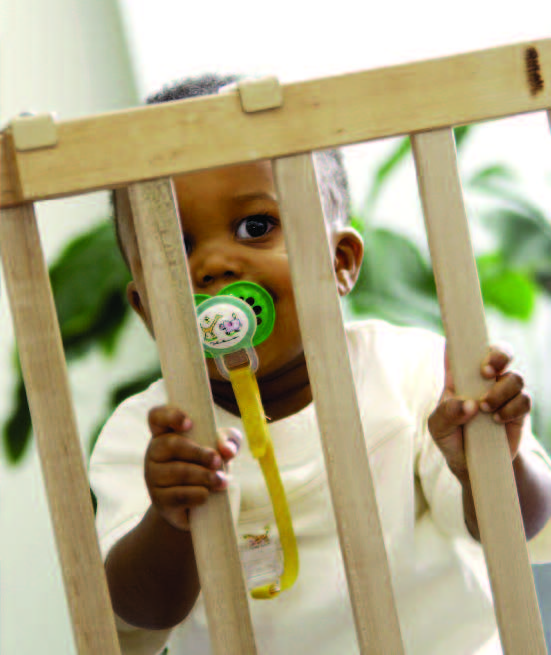
www.ithinkstockphotos.com
There is some very good news. Even though Safe Kids Worldwide (www.safekids.org) has reported that the estimated number of emergency room visits for children has increased 31% over the last decade, the CDC has reported that the number of childhood fatalities from injury has dropped nearly 30% over the same time period. Thankfully, most accidents are preventable and much is being done to prevent them. According to a recent National Safe Kids’ Report to the Nation, many factors have contributed to the dramatic decline in the accidental childhood fatalities:
- Recognizing that child injury is a preventable public health issue.
- Educating the public through campaigns at the national and community levels.
- Improving safety devices through ongoing R&D and encouraging their use.
- Collecting feedback from “child-proofers,” both private and professional, to develop even safer new products.
- Enacting and enforcing child safety laws.

www.ithinkstockphotos.com
What can you, as a grandparent (or non-parent caretaker) do to keep those numbers moving in the right direction? Create a safety-product checklist that applies to your particular situation. It should include standard-issue items such as safety gates, kitchen and bathroom cabinet safety locks, corner and sharp edge bumpers, doorknob covers and door locks, outlet covers and outlet plates, window guards or safety bars, doorstops and door holders (to prevent fingers getting caught), wall brackets (to secure tip-able furniture and TVs to the wall), safety hinges on toy chests and window seats, and non-skid bathtub strips.
Once you’ve covered the basics, consider safety precautions that are not always obvious. These include outdoor alarms made for pools, gates and doors, blind winders and drapery cord cleats, anti-scald devices for baths and taps, safety netting for balconies and decks, appliance locks for dishwashers and stoves, safe-locked storage for firearms & ammo, toilet lid locks, and fire escape ladders. If your grandkids are “regulars” at your home, you should consider enrolling in an infant & child CPR class (or at least purchase a how-to DVD). And if you own a dog or other animal that is threatened by little ones, talk to a professional pet consult to understand how you can desensitize your pet.
Big Business
Professional childproofing has evolved into a very lucrative business over the past two or three decades. So perhaps it’s time to turn to the pros for some advice—hopefully accompanied by some reasonable housecall pricing. Industry experts recommend that child-proofing be done before a child can crawl (typically at 3-6 months). According to the pros, the six main areas of focus for proofing purposes are:
- Electrical safety
- Physical access
- Chemical access
- Medicine access
- Fire safety
- Reporting potentially dangerous products
As with most professional home services, the cost for childproofing comes with a price tag. An initial at-home consultation typically ranges between $50-$100. Actual services rendered depend upon the size and safety conditions of each home. Complete packages can begin as low as $300, but can easily soar to $1,500 or more. As an example, the typical two-bedroom/two-bath apartment might cost $300-$600, whereas a suburban two-story home can reach the top of the price scale.
Professional Proofers…
These NJ-based childproofing experts confirm that business is booming:
A–Plus Childproofing • Jersey City apluschildproofing.com
Baby Proofers Plus Inc. • Summit babyproofersplus.com
Home Safe Home • Livingston homesafehomenj.com
Royal Baby Safety Corp • Summit
babysafe.com
Home Safe Home
Whether you’re brand new at the baby game, a seasoned parent of a rollicking group of toddlers (and their slightly older siblings), or proud grandparents of a growing second-generation brood, the houseproofing challenge remains the same. The responses to this challenge can vary, from complete paranoia to a somewhat less vigilant “my kids survived, so will theirs” attitude. Personally, I am closer to the former than the latter. I am not sure whether it is the added generational difference or a bit of senior OCD that makes creating the perfect germ-free, chemical-free, hazard-free home environment such an inordinate obligation for me. Thinking back, I question whether I was this conscientious? To be honest, probably not.
Ironically, after paying a visit recently to my grandchildren’s home, I found myself somewhat taken aback by what I considered to be their parent’s rather laid-back attitude toward houseproofing. I actually noticed a sharp table corner missing a buffer cushion, an electrical outlet with a safety plug dangling, and a kitchen cabinet with a childproof lock unlocked. Hard to admit, but it does remind me somewhat of my own home back when my kids were as young as their children are now. It was a reminder of how easy it is to let things slide as an overwhelmed parent.
Even with the most vigilant and meticulous household policing, there’s always the potential for some danger to be overlooked or to go unsuspected. Even the most painstaking household safety campaign is never as effective as the ever-watchful eye of an alert and devoted caretaker, regardless of the generational relationship. Despite the most intensive childproofing protocol, vigilance is the real secret. And, of course, that primordial responsibility does not stop within the confines of our homes.
Finally, in my hyper-vigilance to ensure that my home is not a toddler trap, I think I’ve discovered an additional benefit. I’ve started thinking very realistically about the safety measures I might want to take in anticipation of growing old in this very same home. Indeed, down the road, my “senior-proofing” project should be much easier after everything I’ve learned. Just one change—no more childproof caps!
Editor’s Note: According to Safe Kids Worldwide, a non-profit organization based in Washington DC, last year suffocation was by far the major cause of fatal childhood accidents—including 77% of the deaths under the age of 1. Choking and falls came next, followed by furniture and TV tip-overs and fatal injuries caused by toys.
“A feisty, rather luxurious eggplant curry, ennai kathrikai, may have been my favorite dish of the night.”
Karaikudi
1671 Oak Tree Road, Edison. Phone: 732.516.0020
Open Monday through Friday for lunch from 11:30 a.m. to 3 p.m. and Saturday and Sunday noon to 4 p.m. Dinner: Monday, Wednesday through Saturday from 5:30 to
10 p.m., Sunday from 5:30 to 9:30 p.m. and Tuesday dinner buffet from 6:30 to 10 p.m. Major credit cards accepted. Call to inquire about reservations.

Karaikudi isn’t your average restaurant groupie’s trend-of-the-minute, Instagram-ready hot spot. It’s posh in a traditional way, neither deliberately un-decorated nor all-out artfully attired in a manner that attracts the “Well, I-was-there-last night” crowd.
No, Karaikudi, located in a large parking lot behind one of many shopping centers on Oak Tree Road in Edison, is a rare-for-America Chettinad restaurant, specializing in the little-known cuisine of a region in the state of Tamil Nadu, in Southern India, where typically vegetarian food reigns and spices star.
Yet Chettiars, the people of Chettinad, are not vegetarians. They do not eat beef or pork for religious reasons, but they are huge fans of fish, chicken, lamb and goat. They celebrate spice arguably with more passion than any people in the Spice Belt of South India, and serve their spices, including a variety of chilies, not in fiery doses but by skillfully integrating them into their dishes.
Karaikudi, where members of the New Jersey Indian community and the devoutly food-centric congregate, is a favorite of James Beard Award- winning chef Floyd Cardoz, whose landmark restaurant Tabla brought high-style Indian fare to New York City. It’s where learning something new in food is a delight.
Two of my favorite dining companions, Lily Mullen, 15, and May Mullen, 13, made the trip from Ocean County to experience foods completely foreign to them at Karaikudi. They’re not exactly novices in the kitchen, serving as extremely able sous chefs during my own recipe-testing projects and helping their parents, Eileen and Shannon Mullen, with nightly dinners. They also win 4-H awards for the produce they raise in their extensive backyard garden and for the chickens they’ve nurtured for years. As they efficiently combed Karaikudi’s menu, asking questions both pertinent and probing, I thought to myself, “These two could teach a CIA grad a thing or five.”
We quickly dug in. I could’ve eaten five portions of a signature Chettinad dish, Gobi 65, aka chili-infused cauliflower. Lily coated her tongue and tummy with a silky, creamy mango lassi, which she describes as a lovable “milkshake-like drink,” before, during and after the Gobi 65. It was, she said, “covered in the crispy coating of orange spices that looked like nothing I’ve ever eaten before.”
“They both were deliciously different,” Lily said of the lassi and cauliflower. “I soon realized that Indian cooking has very spicy flavors or mild, simpler ones.”
In other words, Lily caught on to the very essence of Indian fare: balance. If you drink a yogurt-based fruit lassi as a counterpoint to a chile-powered dish such as Gobi 65, you’ll catch flavor not fire.
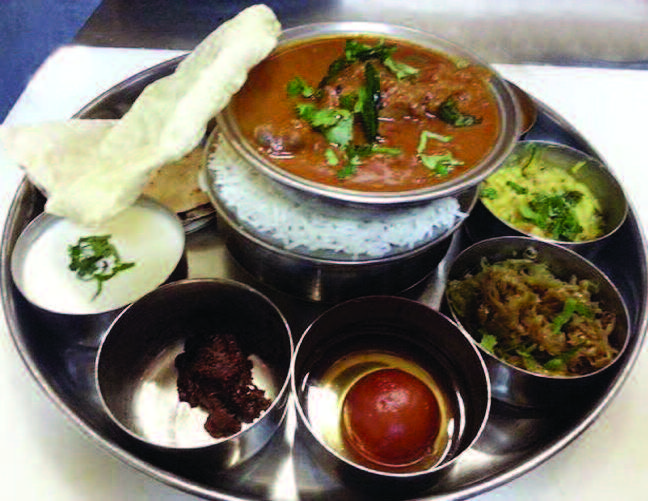 May took a liking to a playfully presented starter called chicken “lollypops.” Dusted in masala, it was a textbook example of how a classic spice mixture can energize a basic such as chicken.
May took a liking to a playfully presented starter called chicken “lollypops.” Dusted in masala, it was a textbook example of how a classic spice mixture can energize a basic such as chicken.
“The chicken lollypops were my favorite dish,” May said.
“The color, the taste, the spiciness and flavor just really hit the spot.”
Mysore bonda, a warming lentil stew enriched with chilies and served alongside coconut dumplings, is something I’d curl up to gladly on a rainy night. May, not a fan of coconut, thought the dumplings a tad bland. But she’d happily reprise the chicken biryani, which was a far more spice-roused rendition than the stuff too often doled out at restaurants without Karaikudi’s finesse.
“The chicken biryani was intriguing!” she exclaimed. “It’s unlike anything I have ever tasted. It wasn’t too spicy or too bland.” Lily summed it up by saying, “The chicken rice with the egg dish looked like what I imagined Indian food to look like.”
I always imagine a banquet of India’s unfailingly gregarious vegetables as a perfect meal, and I’d want Karaikudi’s paneer 65, spiced and fried cheese, on any groaning board. With black pepper and ground chilies as key components, neither one overpowering the other, this is Indian cheese taken to a new level.
A feisty, rather luxurious eggplant curry, ennai kathrikai, may have been my favorite dish of the night: Eggplant stewed with onions, tomatoes and chilies in a tamarind-based sauce proved tart, tangy and inviting as a side show to both the bone-in mutton kurma, a casserole of goat in a silky cashew gravy, and butter chicken, another saucy-yet-sassy stew of chicken with a creamy tomato-infused base.
“Out of the five gravy dishes we tried, the fish one was my favorite,” Lily said. For her, the Chettinad fish curry, with kingfish simmered in a multifaceted masala, bested the chicken, mutton, eggplant and pea-cheese sauce-rich dishes.
Fish curries are a specialty of Chettinad cuisine, so Lily’s spot on in her assessment. Karaikudi’s shows off its spice know-how, fusing seasonings warming and soothing in a way that lends depth to the finfish. I could’ve eaten that dish all night.
I have to admit that I was most excited to watch Lily and May have a proper experience with both a dosa and an uthapam – specifically a paper masala dosa and an onion uthapam. The paper dosa, a large, lacy and extremely light crepe made with rice flour and, in this case, stuffed with potatoes and onions licked by masala, prompted Lily to say it had “the texture of a French fry.” May enjoyed the dosa, but thought the filling “a little too spicy.” The onion-flecked uthapam, often dubbed an Indian “pizza,” is made with a rice flour-lentil base and is thicker than a pancake. Lily enjoyed it straight, no chasers — without “dips,” as she cleverly termed the chutneys, sambhar and raita that accompanied our food.

Pineapple kesari, anyone? That’d be a pineapple semolina pudding that’s a kind of second cousin to a fruited bread pudding. Gulab jamun? Snap up these milk dumplings soaked in rose-flavored sugar syrup at Karaikudi. Both desserts are sweet, yes, but not cloying, particularly the gulab jamon, which Lily referred to as “pancake balls.” They “seemed daunting at first, yet they tasted like a pancake soaked in syrup.”
The only dish we all didn’t take to was billed as chakara pongal and described as a “beet halwa.” It wasn’t like the chakara pongal I’d had before, a very sweet crumble-esque dish starring nuts, dried fruits, basmati rice, milk and lots of jaggery (palm sugar). This shredding of beets was sweet without counterpoint, which set it apart from Karaikudi’s norm.
And Karaikudi’s norm is food so transporting, a dinner here is as good as a stamped passport.
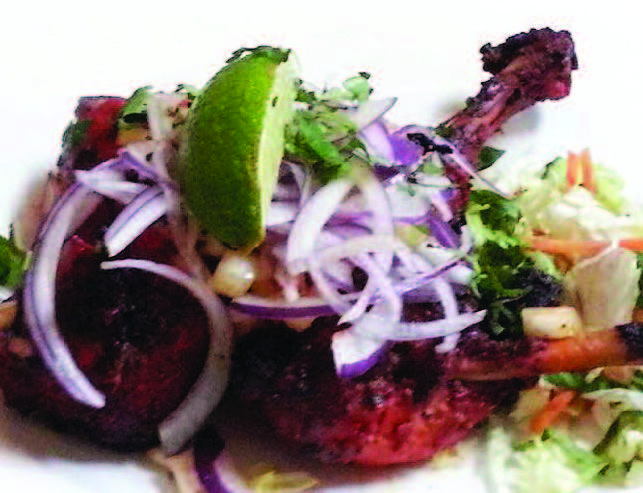
Editor’s Note: The ritual of the International Night dinners that became the cookery book of the same name by Mark Kurlansky and his daughter Talia omits India only by fate. In all the spins of the globe that directed the Kurlansky family to their cooking destination, somehow Talia’s finger didn’t land on the sizable country of India. So we filled in the gap for the many, many devotees of Indian cuisine in Edge-land.
A father-daughter duo embarks on culinary flights of fancy
In March 2009, when Talia Kurlansky was 9, her father Mark spun a big globe with an airplane as its base that sat on a desk in their Manhattan apartment…and let his daughter’s finger fall where it may. That fateful fall of the finger dictated what was to become a family ritual: a dinner menu culled from the cuisine of a foreign land. Fifty-two menus later, the fruits of the family’s ritual have become a joint father-daughter book, International Night (Bloomsbury; $29), a globetrotting adventure in food, history and culture.
Mark Kurlansky is one of the most respected and decorated writers in America, author of The New York Times best-sellers that include Cod, Salt, The Big Oyster, The Basque History of the World and 1968—as well as a host of adult fiction and children’s books. Talia, now 14 and a freshman at The Calhoun School in New York, may not (yet) have her father’s catalog of books, but in her debut with International Night, she explains in a voice both sure and entertaining how to separate an egg, why spaghetti Bolognese is her favorite dish, who grills the best sardines and
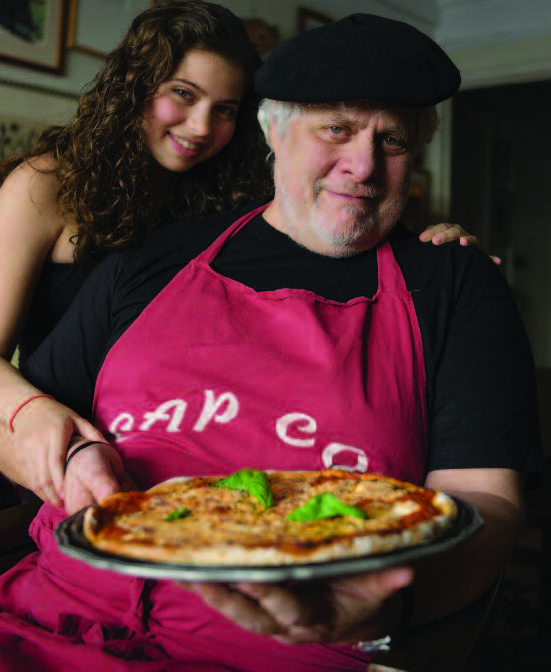
Courtesy of Mark Kurlansky
what steps are necessary to achieve a perfect pizza made from homemade dough tossed, softly and gently, in the air (“Try not to let the dough land on the dog, or in a potted plant. But the dog usually loves it”).
International Night is a book that schools would be wise to include in their curriculum, and parents in their home library. The Kurlanskys’ experiences—both in the cooking (“I tried dishes we don’t normally make in our house,” says Talia; “Some recipes in this book are ones I’ve made for years, but have refused to share until now,” adds Mark) and the off-the-beaten path traveling—are primers in how to learn.
“I’d been to 41 of the places in the menus,” Mark says of the bills of fare that range from Andalusia, Algeria, Aquitaine and Argentina to Quebec, Sri Lanka, Tanzania and Turkey. “That left 11 where I’d never been.”
All international dinner nights involved homework. Mark and Talia researched culture, customs and cuisines, and made sure music was part of the evening’s festivities. Talia added another component: costumes.
“I’d learn what traditional dress and what the outfits were like, and I’d use things from our home to come up with a costume I’d wear for International Night,” she says.
“Kids contribute a lot of ideas through the questions they ask,” Mark notes.
“I got a great sense of the timeline of history and a realistic sense of place,” Talia adds. Her mother Marian took hints of history and culture to guess which country her family was traveling to via the edible route.
Sometimes, when Talia’s finger landed on a destination, the end result was a trip. As Mark writes in their book, “When I learned that for the first time in history there was a cooking school in Morocco, I decided that Talia and I had to go.” They studied with dadas, women trained by their mothers in the crafts, secrets and recipes of Moroccan cookery. They cooked with their dadas several hours a day, taking in the sights and curiosities of this North African country in their non-kitchen time.
“While on this trip, I went up a level in my cooking,” Talia writes. When it came time to write a menu, “we realized that we had too many dishes [for just one dinner], so we had two Morocco Nights.”
Morocco may have served forth a bounty for the Kurlanskys, but every aspect of the project brought insight and new skills to the father-daughter team. Talia talks of using the back side of a ladle to spread crepe batter around a pan: “Move the ladle in a circular motion and that spreads the batter evenly.”
Mark, whose expansive knowledge of all things culinary has brought him honors from the James Beard Foundation, Bon Appetit magazine, the National Council of Teachers of English and National Parenting Publications, still marvels at the “universality of salt,” and points out that “peppers are different everywhere (because), like wine, they taste differently everywhere they are grown,” and offers tips on spices such as cardamom: “It gives dishes a magical perfume, but get the green, not the white.”
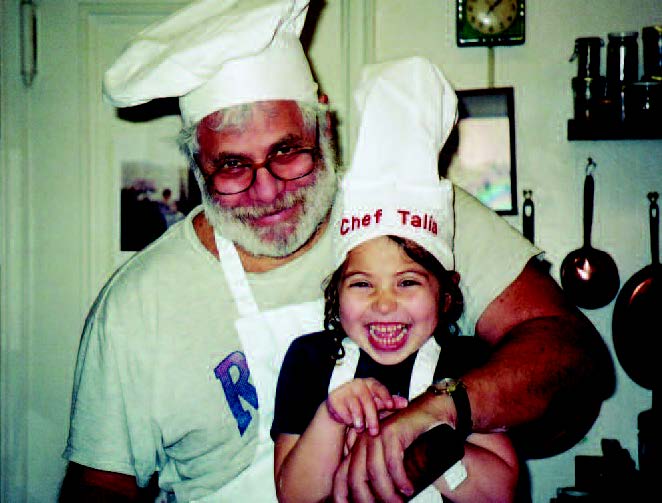
Courtesy of Mark Kurlansky
International Night also offers the recipe for Mark’s prize dessert, “Rigo Jancsi” from Hungary, which he spent weeks perfecting during a stint in the 1970s as a chef at a restaurant in Greenwich Village. The cake was easy, the chocolate topping not all that hard to learn, but “I worked on the filling for weeks, trying, throwing it out, trying again.”
Finally, Mark got it.
As Talia says, “A lot of people making dessert don’t understand the chemistry. They don’t use a recipe.”
But with most of the savory recipes in International Night, the Kurlanskys agree the instructions should be “suggestions.” Home cooks should let inspiration flow.
Researching for the book, and cooking for the book, left Talia with an even stronger desire to travel. “I love being places where I don’t speak the language,” she says. “I want to travel everywhere.”
Mark, who currently is writing a book about the impact of paper on civilization and whose Twitter handle is @codlansky, wishes Talia’s finger had landed on Scotland, since he spent time there fly-fishing and had many tales to tell—and India, a huge country he’s yet to explore.
What? Never been to the land virtually ruled by his beloved spices?
“No,” Mark says, his voice expressing regret. “I’ve never been to India. We need to correct that.”
International Night…the sequel.
 RECIPE FILE: HARIRA* (a soup for Moroccan Night)
RECIPE FILE: HARIRA* (a soup for Moroccan Night)
- one-half pound lamb, cut into bite-size pieces
- 2 medium white onions, finely minced
- one-half pound dried lentils
- one-half cup canned chickpeas (aka garbanzo beans), drained and rinsed
- 1 celery rib, finely minced
- 6 tablespoons olive oil
- Large pinch salt
- one-half teaspoon turmeric powder
- 1 teaspoon clarified butter
- 9 cups water
- 3 medium tomatoes
- 1 slice fresh ginger root, peeled and chopped
- 2 tablespoons tomato paste
- 4 turns of peppermill containing black peppercorns one-quarter cup rice, cooked
- 3 tablespoons flour
Place the lamb, onions, lentils, chickpeas, celery, 3 table-spoons olive oil, salt, turmeric and clarified butter in a pot. Cook over medium heat for 10 minutes.
Add the water. Cook over medium heat for one hour.
Meanwhile, take the tomatoes, blacken the skin over a burner, and rub it off. Quarter the tomatoes and remove the seed and gel. Save yourself a lot of chopping by pureeing the tomatoes in a food processor with the ginger root.
Mix in a bowl with the tomato paste, remaining 3 tablespoons olive oil and the black pepper. Add this mixture to the soup pot. Stir well and cook another 20 minutes. Add the rice. Cook 10 minutes more.
Take some liquid from the soup and mix it in a bowl with the flour until it is smooth and without lumps. Stir it back into the soup. Stir constantly while cooking soup for another 5 minutes. Serves 3.
Earlier this year, fans of the New Jersey-based HBO series Boardwalk Empire were surprised to learn that it would be shortened from its initially proposed run of seven seasons to five. Editor at Large Tracey Smith, who interviewed series creator Terence Winter for EDGE in 2013, doubled back this fall to get his take on the Nucky Thompson experience, find out what¹s coming next, and talk a bit more about what keeps his creative juices flowing.
EDGE: Shortening this series to five seasons was a big decision. How did that conversation go between you and fellow executive producer Howard Korder?
TW: Somewhere around the middle of Season 4, Howard and I looked at each other and said, “I get the feeling that we’re kind of headed toward a conclusion here.” It was completely inadvertent in our storytelling, but we felt like if we were listening to Nucky and what he was saying and where he was taking us, that he was trying desperately to get out of this business and to wind down. The more we talked about it, the more we said, “Yeah, we don’t have a whole lot more to explore with this character.” We didn’t want to just milk it, and the last thing we want to do is to become repetitive.  We’re lucky enough to not be in a situation where, like network TV, for example, you have to hit a certain amount of episodes in order to become syndicated. That’s not the model over here, and that’s not the model that exists anymore, and creatively it’s not anything I’m comfortable with. We always felt that when this story runs its course that’s when the series ends. We felt like that with Nucky and started to have that conversation with HBO. Creatively, they are incredibly supportive; they said, “Okay, well how much do you think you need?” We felt we needed eight more hours to properly tell this story, and that’s where we ended up.
We’re lucky enough to not be in a situation where, like network TV, for example, you have to hit a certain amount of episodes in order to become syndicated. That’s not the model over here, and that’s not the model that exists anymore, and creatively it’s not anything I’m comfortable with. We always felt that when this story runs its course that’s when the series ends. We felt like that with Nucky and started to have that conversation with HBO. Creatively, they are incredibly supportive; they said, “Okay, well how much do you think you need?” We felt we needed eight more hours to properly tell this story, and that’s where we ended up.
EDGE: Give me the two highlights that stand out for you personally on this project?
TW: One would be Martin Scorsese becoming involved—getting to work alongside my cinematic hero, who was the reason I got into this business in the first place. I saw Taxi Driver when I was a teenager and I can draw a straight line from Taxi Driver through the rest of my career. That was a movie that made me sit up and take notice of movies as being something other than just something to do on a Saturday afternoon. I walked out of that and thought “Wow, what was that? Who is this guy Martin Scorsese and what else has he done?” When I hung up the phone after Martin Scorsese told me “I’m going to direct this pilot” I almost fell out of my chair. That was just an amazing highlight. Part two? All the rest of it! Having my own show for the first time, getting to work alongside my dear friend Tim Van Patten, getting to know and become dear friends with Howard Korder, Christine Chambers—who started as my writer’s assistant fourteen years ago and now is one of our writers—that whole experience. Just lump it all together.

Photo by Macall B. Polay/HBO
EDGE: You’re about to fast-forward 40 years with your new project about CBGB. Are you nervous about how fans will receive it?
TW: No. I try to approach things that I write as if I’m an audience member. What would I like to see? The rule of thumb is, if I think it’s interesting, hopefully other people will too. If I think it’s funny, hopefully people will agree. Rock and Roll…1973…New York City. I’m there!! If I had nothing to do with this, if I saw a trailer for this, I would absolutely tune in to it. And then you say that Martin Scorsese and Mick Jagger are involved in it, Bobby Cannavale stars in it—you’re going to see the beginnings of punk, disco, hip-hop, see these bands, hear this music, spend time in that crazy rollercoaster world of New York when the economy was horrible and crime was to the roof. I’d watch it so I’m confident that there are people that are equally interested. Hopefully, I’m right.
EDGE: It’s just one great project after another for you. What’s it like to be Terence Winter?
TW: I feel like any moment I’m going to wake up and it’s 1975 and I’m going to be late for my job at the butcher shop. I couldn’t have written a script for my own life that would have played out better. I am unbelievably blessed, I am unbelievably fortunate and I don’t take that for granted for one second. I look in the mirror every day and just think I am the luckiest guy in the world. And I really am.
EDGE: What was the toughest choice you had to make along the way?
TW: Leaving a promising law career to embark on a writing career was pretty crazy. I left in 1990 after two years to move to Hollywood to become a screenwriter. People thought I was out of my mind.
EDGE: Had you ever written a screenplay?
TW: No. Nor had I ever been to Los Angeles.
EDGE: When you think about your legacy, what comes to mind?
TW: First and foremost, I want to entertain people. At the end of my career, if I’ve succeeded in that, then I think that’s really all I could’ve asked for as an artist. When I look at movies done in the 40’s or 50’s, I think Somebody wrote that—someone reached out across time and made me laugh. I remember reading Tom Jones by Henry Fielding and there’s a passage that made me laugh out loud. I thought, God, this guy reached out from hundreds of years ago and made me laugh, which is pretty amazing considering sensibility has changed so much. It makes me feel good to know that this will live beyond me, and my kids one day will be old enough to watch The Sopranos and Boardwalk Empire and get more of an insight into me creatively. That is, in some way, psychologically sort of a denial of death— “It doesn’t matter because my work is going to live on.” It’s funny. David Chase and I laughed about this. In The Sopranos, I wrote a similar line for Christopher, who’d made that movie Cleaver, a ridiculous horror movie. Christopher said to Tony, “Wow, that’s really cool. Hundreds of years from now people are gonna be watching this thing.” It’s the same way I feel about our work. It’s great that the written word survives and goes on forever. It’s so great to be able to do this.
Editor’s Note: Tracey and Terence covered quite a bit of ground in their conversation. To read more about the actors, characters and experiences that came together in five seasons of Boardwalk Empire, log on to edgemagonline.com for exclusive bonus content.
There are certain roles that even the most accomplished actresses won’t touch. Making an infuriating, exasperating character believable—and, more importantly, likeable—is right at the top of that list. It is the definition of working without a net. For Lisa Kudrow, portraying these women has become almost second nature. From her brilliant run as loopy Phoebe on Friends to her quasi-authority figures in the cable series Web Therapy and The Comeback, she has elevated the portrayal of the terminally clueless to an art form. As EDGE’s Gerry Strauss discovered, comedy for Lisa is serious business…but also fun and games.
EDGE: Do you recall what first inspired you to go into show business?
LK: I liked performing, even in nursery school. I liked coming home and doing the entire album of Alice in Wonderland that they played for us during that time—standing on the fireplace, just reciting the entire thing. How anyone sat through it is beyond me. I am the third child, by many years, and the kind of child that wanted attention. Positive attention. Maybe that’s why.

NBC/Warner Bros. Television
EDGE: How did your parents pass along the work ethic you’re known for?
LK: My father always said, “I don’t care what any of you do as long as you do the best you can at it. If you’re a garbage collector, I’d expect you to be the best garbage collector.” I applied that to schoolwork and tried to do the best that I could, and I always tried to just work as hard as I could.
EDGE: Were you a competitive kid?
LK: Yes. I had a certain level of competitiveness. I wanted to score better than other people.
EDGE: There was a long period where you didn’t perform.
LK: I put it away for high school and college. I put it in a drawer and locked it. But that love of performing was always in there.
EDGE: When you got back into acting there were some near misses and rejections—Saturday Night Live, Frasier. Did you set a deadline for yourself in terms of getting out?
LK: I don’t remember a deadline, but do I remember when the initial blows happened having a very brief consideration that maybe this isn’t meant to be. But I just couldn’t allow that to happen. That meant I had to figure out how to keep going. I would just replay every recording I had in my head of someone saying No, I think you’re really good, so that I could just be full of that. It’s like taking vitamins. I had to supplement with the encouraging things people I trusted were saying.
EDGE: You turned a minor character in Mad About You—Ursula the waitress— into a keeper. Was that the career plan?
LK: I don’t think I was that clever. In fact, the way that role came about was a last-minute call in the morning. “Can you go to Mad about You? They’re offering you this role. The character doesn’t even have a name. It’s called ‘waitress’… and you have to be there in an hour.” I didn’t even know what the lines were. It was two lines. These were agents saying, “I think you should pass.” I thought, I can’t pass. I need to work. That’s the best show on TV and you don’t say no. I got in my car and I drove down there. I remember I was a little nervous because I had no idea what I’d be doing and I just thought, No matter what, just listen and respond, and be funny. When I saw the lines, I just thought, No problem. She’s an idiot. Okay. She’s an idiot…got it.
EDGE: How did Ursula become a regular character?
LK: At the end of the week, Danny Jacobson pulled me over and said, “I think you’re funny, and I would like to write this character more, and have her in this show more, if that is okay with you. Just five more episodes.” I was about to start figuring out what kind of day job I would have. Because of Ursula, I didn’t have to look for work.
EDGE: How did you develop the character of Phoebe in Friends?
LK: The great thing I remember about Phoebe was that the audition piece was this monologue in the pilot that gives her whole back-story. My take on that really was to give a lot of definition to this person, that she’s cheerful about—or just refusing to see—the horrible, traumatic things that happened in her life. Her mom killed herself and then her stepfather went to jail, and she lived in a car, and she thought that was okay. That’s who she was going to be. Just this person who didn’t acknowledge reality the same way everybody else did.
EDGE: Was there any aspect of just playing Phoebe for all those years that frustrated or bored you?
LK: No, I was not bored, and I didn’t feel like, Oh my God, I’ve got to do something else and I’ve got to get out of here. Just period, I did not. I loved going there every day. I loved laughing hysterically with these five other people that cracked me up every day. And I mean it. It’s true. There were some seasons we’d come back and I’d think, I don’t know what I am doing. LeBlanc one time took me aside, so smartly, and said, “Look, there’s no more work to do because you know who this person is. You keep trying to do work, and there’s no work to do. You’ve got it down. Just relax.” He was right. I was that good student thinking, I put this much work into my homework before so I need to do the same now. This was the cushiest job, with family. We’d been through fires, the six of us together.
EDGE: You also were free to do films in between seasons.
LK: That was the other fantastic thing about Marta, David, and Kevin. They allowed the schedules to work so that we could do a film even when we were doing the show.
EDGE: In The Comeback, the Valerie Cherish character is a former sitcom star using a reality show to launch herself back into the spotlight—a story about a woman who allowed a sense of paranoia and fear about her career define who she was. Did you experience anything like that after Friends?
LK: Maybe there’s something wrong with me but I was not worried or nervous about what was coming next. I’d shot an independent film when we were done with Friends and I thought, I’d be thrilled to just do those forever because I don’t need money now, thanks to Friends. I can do whatever I want. But then this great idea happened for The Comeback, and it was sort of, Well, we’ve got to do it now. We went into HBO to tell them what the idea was and they said, “Yes, so just do it. Write a script.” We wrote a script fast, in three weeks or something. Crazy. Then, we shot the pilot and they said, “Let’s do 12 or 13 of these.” But I completely agree with what you were saying—everyone has some of those fears and insecurities in them. The thing with Valerie was that she was desperately trying to look like she was holding it all together and in control of it all, that her hands were firmly on the reins of her own career. And they weren’t.
EDGE: Now as the series reboots, it’s nine years later—
LK: And she’s a little more desperate and has a little less pride. But the DNA is still the same. Valerie is doing a pilot presentation with some USC film students for Andy Cohen, and she’s looking over clips of what she’s been up to since The Comeback got cancelled. She believes that she was a pioneer of reality television. She’s still acting as if she’s the instructor for the audience, teaching everyone about the life of an actor and what the entertainment business is like.
EDGE: How do you, as real-life role as a mom and wife, view the invasion of privacy that Valerie and her family deal with on a reality show like The Comeback?
LK: I have respect for the privacy of my family. If I speak about them, I have their consent. Valerie is so desperate for the spotlight, she always compromises the privacy of her loved ones. To her, that spotlight is synonymous with “the greater good.”
EDGE: You tend to portray some distinctly flawed characters. Is that more fun than playing someone who is normal?
LK: Yes, much more fun. To me, that’s what funny—people who have no idea how they’re coming off. Valerie thinks she’s pulling it off with her composure, her dignity, her phony-baloney way of talking, and she thinks people are eating it up as if it’s 1978. That cracks me up.
EDGE: The same could be said for Web Therapy’s Fiona Wallice.
LK: She’s so insensitive…but really, she’s not even aware that what she’s saying would be disturbing to anybody. That kind of insensitivity makes me laugh. Those things…I just love it when people have no idea how they come off. There’s just a disconnect.
EDGE: What are the biggest sources of pride in your career?
LK: Okay. I’d say The Comeback, only because I got to actually create that one and write it and produce it, as well as be in it. I am proud of that. It was like nothing anyone had ever seen before, and I think it was good work. I am proud of Web Therapy because, again, it’s like nothing that anyone had ever seen before, and we weren’t sure if just two people talking and improvising would sustain anything—and whether the people we have doing it would be willing to sit and improvise. Who Do You Think You Are?—even though I didn’t create it—that’s the kind of thing that wasn’t really on American television. I am glad we talked NBC into doing it. Then, there has to be Friends. I have to say Friends.
EDGE: Contractually?
LK: (laughs) That’s so funny! No. No. I am proud of Friends because that was the first time that characters on a show were all young adults, and I remember the network was really nervous at the time. They’re like, “Who’s the grown-up? There is no grown-up in this show. You guys have got to put a grown-up in there.” Now, looking back, that’s really funny. Because, after Friends, everything changed.
 WHO DO YOU THINK YOU ARE?
WHO DO YOU THINK YOU ARE?
In 2010, executive producer Lisa Kudrow brought the British genealogy documentary series Who Do You Think You Are? to American television. The program, which paired celebrities with genealogists to uncover stories from their family history, ran for three seasons on NBC and now airs on TLC. Kudrow herself starred in one episode, traveling to Belarus and Poland. Others who appeared include Spike Lee, Gwyneth Paltrow, Martin Sheen, Edie Falco, Zooey Deschanel and Jim Parsons.
I saw the show in the UK when I was there in 2007, and thought it was the best show I’d ever seen. I didn’t understand why it wasn’t on in the U.S. There are these fantastic details from history that have a personal effect on families and alter the line of a family, so it’s very emotional. I thought everything about it was fascinating, and it was so well done.
When I got back here, I found out that Alex Graham created the show and then it turned out he did some of my favorite PBS programs, including Manor House and Colonial House. They were so well done. I thought this was not a fluke—he knows what he’s doing. We called him up to see if he wanted to do it here and he said Yes.
At first I wasn’t even considering participating. My father had done a lot of research and made a huge family tree. I wasn’t thinking we would have a story, coming from an Eastern European Jewish background. I was more interested in other people and their stories. But Alex said, “You should do it.” I realized that, of course, I should do it because I am asking other people to do it. I need to know what I am
A Real Housewife of New York City
Does the presence of a video crew alter your family dynamics in any way?
I don’t think so. We signed on to do a reality show, so what you see is what you get. Watching the show when it airs does give you an interesting perspective on things, though. My husband and I have our standard arguments, but on the show you get to see both sides. Imagine having an argument with a friend or family member and then being able to watch it later…and seeing that he or she was right.
How much do you let your kids get involved in the process?
My daughter wasn’t even walking when we started, and now she naps, so my son is more involved. He has fun with it. So does everyone on the crew.

Photo by Nadine Raphael
Have you had to set boundaries for the show, is anything off-limits?
Not when it comes to the family dynamics. I’m not a shy person. I’ve got nothing to hide. People forget that it is realty—the show is about me, my family and my friends. There’s a lot of stuff that’s really fun. Sometimes, I wonder why people would want to see some silly thing we do, but the producers say, “No that’s what people love to see!” I think the only time I got really frustrated was having a camera in my face when we went Geocaching in Montana. But at that point I didn’t have a choice.
What are you doing for the holidays? Does the show have any say in those kinds of plans?
It’s up to us, not the show. My husband’s family is in California and mine is in Connecticut, so we usually split 50-50. We’ll do Thanksgiving with my family and Christmas with his this year.
You’ve started a fashion blog on your web site called Last Night’s Look. Are you thinking about that business in addition to your modeling?
My kids are beyond a full-time job, so not right now. I am really into makeup—I’ve started an exclusive nail polish line with Ricky’s NYC, and that’s been a really fun venture. And how great would it be to still be modeling in my 50s? Some women can do it. Actually, my secret dream is to be a TV host or newscaster. It’d be fun to experiment with that. Maybe you’ll see me as your local weather person some day. EDGE
Editor’s Note: EDGE and Kristen wish you a happy and healthy 2015! (Dress: ALEXIA ADMOR; Earrings: GREGG RUTH; Bracelet: SIMON G.; Shoes: STEVE MADDEN)













